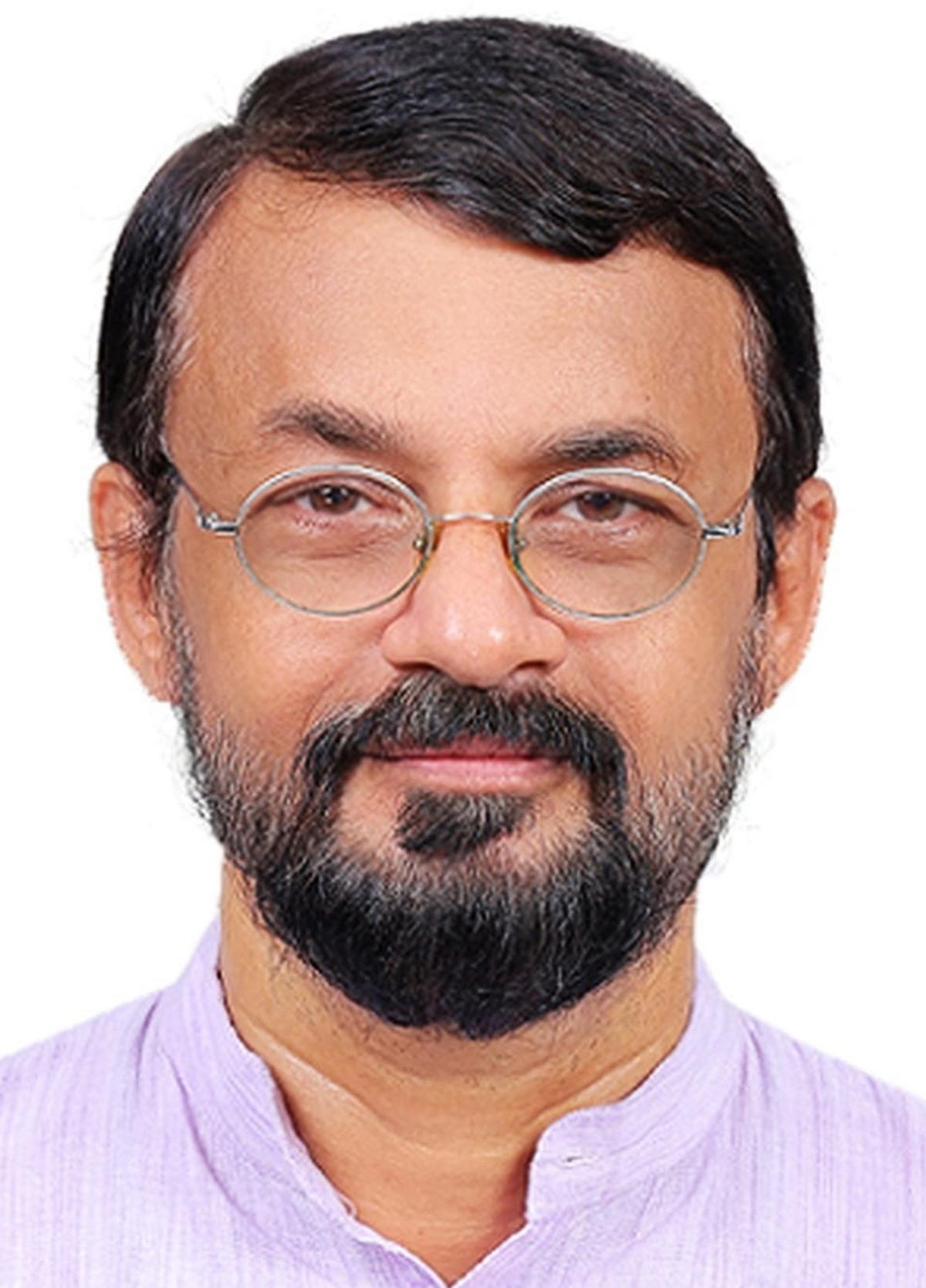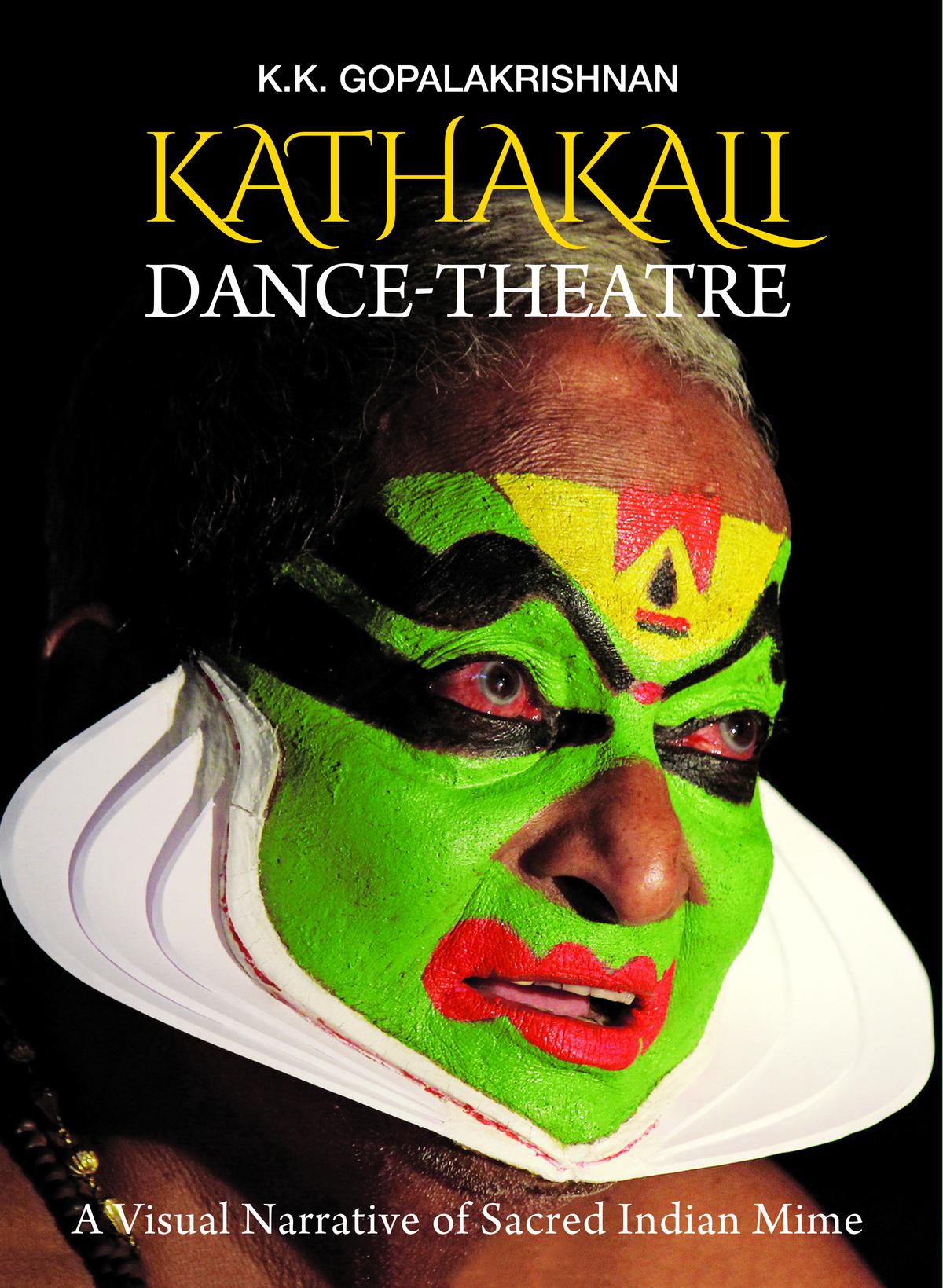
A Kathakali dance performance named ‘‘Keechaka Vadham’‘ in Kerala,
Once a banker, KK Gopalakrishnan chose to focus on art instead of the ledger. The tales of a teller did not interest him. His passion led him to focus on performing art traditions in Kerala. Now, a governing body member of the South Zone Cultural Centre of the Ministry of Culture, he has come up with a new book, Kathakali Dance Theatre: A Visual Narrative of Sacred Indian Mime. The book, which comes with a foreword by Leela Samson, takes the reader behind the scenes, into the green room of artists, their struggles and unique bonds built over long make-up hours.
Edited excerpts from an interview:

KKG
| Photo Credit:
SPECIAL ARRANGEMENT
What is the inspiration behind your book?
I started writing about performing arts traditions in Malayalam. Veterans in the field, such as Leela Venkataraman, the late Sunil Kothari and the late David Bolland, who authored A Guide to Kathakali, and many others encouraged me to write a book on Kathakali in English from my perspective.
Kathakali is a complex art form, the appreciation of which is enhanced by the spectators’ familiarity with its gestural language, make-up codes, its stories, etc. How does it remain relevant to today’s audiences?
Kathakali is the best example of touryatrika, an aesthetic medley of music, drums and dance. To appreciate the play beyond the superficiality of seeing gods, demons and humans as larger-than-life characters on the stage and anti-heroes as protagonists, one must understand the story. In the initial stages of watching Kathakali, getting familiarised with the long process in the green room and reading the synopsis in advance is a bonus.
Introducing microphones and modern acoustics brought a renaissance in the rendering of Kathakali music and its popularity.
When I started watching Kathakali, most in the audience were above 50. In contrast, in the last two to three decades, youngsters have dominated the audience in Kerala.
?
Beyond doing small roles in films, what is the financial and social position of Kathakali artists today? Are there enough artists in the new generation to ensure a healthy future for the art?
In Kerala, the situation is good for very few artists. There are a few brilliant youngsters. Of these, some are employed in government institutions on annual contracts but regularity in their salary is not assured. Outside Kerala, Kathakali artists survive by conducting classes for dancers and theatre actors, and by assisting choreographers.
How does Koodiyattam, a highly complex art with a niche appeal, compare with Kathkali in the present fast-paced world?
One cannot compare the two. Koodiyattam is also not an art that is suitable for today’s public entertainment scenario. Five spectators for Koodiyattam is pleasing; 25 is something remarkable. I am an eye-witness. I was the director of the Centre for Koodiyattam of the Sangeet Natak Akademy for six years. Kathakali is different. Both will sustain; Koodiyattam by imitating Kathakali, and Kathakali practitioners by imitating their predecessors.
Do you agree with Leela Samson when she says in the foreword, today it is only katha no kali?
I couldn’t agree more for two reasons. Modern-day Kathakali is diluted, chiefly, focusing on middle-brow tastes. Thus, only the Katha (story) sustains but with damages to the Kali element (play/dance-theatre) of it. Kathakali is a story, play, and dance theatre. Suggestive acting is its backbone, with the actor as the narrator and interpreter. Second, she learned Kathakali very well and is technically outstanding in portraying the roles of heroines; she knows the art.

KKG’s book cover
| Photo Credit:
SPECIAL ARRANGEMENT
Stay connected with us on social media platform for instant update click here to join our Twitter, & Facebook
We are now on Telegram. Click here to join our channel (@TechiUpdate) and stay updated with the latest Technology headlines.
For all the latest Art-Culture News Click Here
